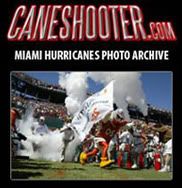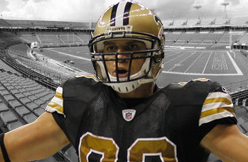Nov/18/15 09:05 AM Filed in:
Jimmy GrahamHere’s one call Seattle Seahawks offensive coordinator Darrell Bevell made this year no one can disagree with.
Early in the season, when a reporter again brought up the name of Jimmy Graham, Bevell smiled and said “it’s always going to be a question for us, I know that.”
Indeed it is.
The latest to wonder about how the Seahawks are using Graham is Arizona’s Tyrann Mathieu, who was quoted this week as saying “I don’t think they use him quite as creatively as the Saints used him. I played against Jimmy in 2013 when he was with the Saints, and I mean he was all over the field. The biggest thing with them was [they] created mismatches for him, and [Sunday] he wasn’t really in a position where we felt like it was a mismatch. We felt like we had great cover guys on him all the time, and those two weeks we had to prepare for them, it really helped us a whole lot.”
Those comments came after a game in which Graham had three receptions for 40 yards but could have maybe doubled those numbers had he been able to control every pass that came his way. In the 2013 game Mathieu is referring to Graham had nine catches for 134 yards and two touchdowns, a contest won by the Saints 31-7.
Creativity may in some ways be in the eye of the beholder. What we do know is that Graham was always going to be used differently by the Seahawks due to the nature of their offense, and that he has been.
According to numbers from Pro Football Focus, Graham has lined up as an in-line tight end roughly 60 percent of the time this season. That compares to about 37 percent of the time with the Saints.
But some of that figured to come with the territory of playing for a Seattle team that runs it on 47 percent of snaps (which is down from the 52 of last season) compared to only about 37 for the Saints last season.
According to PFF’s numbers, Graham has been sent out on routes on 60 percent of his snaps. He has been used as a run blocker 35 percent of time and as a pass blocker 5 percent of the time (the pass blocking basically the same as in New Orleans). The run blocking is more, but as Seattle’s coaches have pointed out, a team can’t simply just pass every time he is in the game or teams would figure that out. There’s also the fact that many plays can be changed at the line of scrimmage, with the play sent in having a run-pass option.
Graham has 41 catches for 491 yards, each numbers that lead the Seahawks, on track for 73 receptions and 873 yards. Those numbers are down from his New Orleans days — he had at least 85 catches and 889 yards each of the last four seasons. But given Seattle’s run-pass ratio, it’s not really that out of line percentage-wise from his numbers in New Orleans.
Graham is averaging almost seven targets per game (62 in nine games). He averaged 7.75 last year with the Saints — so, basically getting one fewer target per game and with a team that throws it roughly 10 percent less.
Another way to look at it is the percentage of Graham’s targets of his team’s total passes. As we detailed earlier this year, Graham was targeted on 22.3 percent of his passes in 2011, his best season with the Saints.
Last year, Graham got 18.8 percent of the Saints’ targets (124 of 659). This year with the Seahawks, Graham is being targeted on 23 percent of Seattle’s attempts (62 of 266).
What is down — and may be doing the most to color the perception of how Graham is being used — are touchdowns. Graham has just two with the Seahawks after having nine or more each of the last four years with the Saints,including 16 in 2013.
How creatively —or simply how — the Seahawks are using Graham will be a subject of debate all season. But the numbers indicate the team can’t really be accused of ignoring him.

(seattletimes.com)



